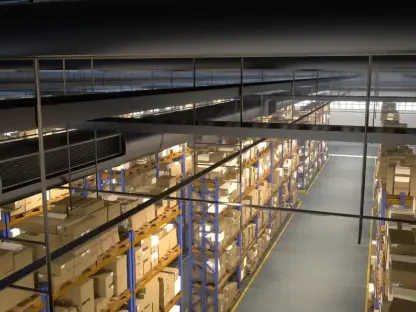In a welcomed turn of events for the trucking industry, truck tonnage levels for July 2024 have shown modest growth, bringing a glimmer of hope to a sector that has been grappling with fluctuating volumes for over a year. According to data released by the American Trucking Associations (ATA), this growth marks only the second increase in the last 17 months, underscoring the persistent challenges faced by the industry. The ATA’s Seasonally Adjusted (SA) For-Hire Truck Tonnage Index edged up by 0.3% to 113.7 in July, following a significant 1.8% decline in June. However, when viewed on an annual basis, the index still indicates a downturn with a 0.9% decrease compared to the previous year.
Underlying Data and Indices
Seasonally Adjusted and Not Seasonally Adjusted Indices
Breaking down the numbers further, the Not Seasonally Adjusted (NSA) index unveiled more positive results with a 3.4% increase in July, reaching a level of 116.7. Unlike the SA index, which considers seasonal variations, the NSA index measures the actual tonnage hauled by fleets without such adjustments, providing a raw perspective on the industry’s performance. This particular index is more reflective of contract freight rather than spot market freight, making it a crucial tool for benchmarking fleet levels and gauging market trends.
The slight yet noteworthy uptick in the NSA index suggests that there may be underlying strengths in the market, particularly in certain segments. Factors such as increased import activity, particularly at West Coast seaports, have contributed to these gains. Additionally, stable retail sales and a minor improvement in factory output have provided a foundation for this modest growth. These economic indicators, though fragile, hint at a slow but hopeful turnaround in the truck freight market, potentially paving the way for more consistent recovery in the coming months.
Factors Fueling the Growth
Role of Retail Sales and Import Activity
The increase in truck tonnage levels can be attributed to several key factors that have bolstered the trucking industry’s performance for July. One of the main drivers behind the uptick is robust import activity, especially at major West Coast seaports. The steady influx of goods from overseas has ramped up the demand for trucking services to transport these goods across the country. This heightened import activity aligns with recent trends showing strong import volumes despite trade tensions and logistical challenges.
Another pivotal element is the relatively stable retail sales observed during this period. Retailers have managed to maintain a steady flow of goods from manufacturers to consumers, necessitating consistent trucking capacity to meet demand. Coupled with a slight increase in factory output, these factors have formed a trifecta that has somewhat stabilized trucking volumes. However, it’s essential to acknowledge that these gains are still precarious and subject to fluctuations, as evidenced by the mixed performance metrics over the past several months.
Broader Implications for the Logistics Sector
Economic Indicators and Market Trends
These developments in truck tonnage levels reflect broader themes within the logistics sector, which has been experiencing modest improvements amid ongoing challenges. Economic indicators such as retail sales, factory output, and import activity play a crucial role in influencing truck tonnage. While the recent growth in these areas offers hope, the market remains cautious, requiring continued monitoring to determine if this trend will solidify into a consistent recovery.
The logistics sector must remain attentive to other developments that could impact truck tonnage levels, such as changes in intermodal volumes, fluctuations in diesel prices, and the dynamics of freight shipments and expenditures. These variables, reported in various updates, could either bolster or hinder the recovery process. As the industry navigates these complexities, the cautious optimism expressed by experts like ATA’s Chief Economist Bob Costello underscores the need for a balanced outlook. The interconnected nature of logistics means that improvements in one area can have ripple effects throughout the supply chain, highlighting the importance of a holistic approach to recovery.
Path Forward for the Trucking Industry
Sustained Improvement Needed
In a positive development for the trucking industry, truck tonnage levels for July 2024 have shown a slight yet encouraging uptick. This offers a ray of hope in a sector that has struggled with wavering volumes for more than a year. According to the American Trucking Associations (ATA), this increase is only the second in the last 17 months, highlighting the ongoing difficulties faced by the industry. The ATA’s Seasonally Adjusted (SA) For-Hire Truck Tonnage Index rose by 0.3%, reaching 113.7 in July, following a significant 1.8% decline in June. Although this monthly growth is a positive sign, the index still reflects a broader downturn, showing a 0.9% decrease when compared to the same time last year. This mixed picture emphasizes the challenges that the trucking industry continues to navigate, even as small gains are being made. The industry remains cautiously optimistic, hoping that this modest growth could signal the beginning of a more stable and upward trend in the months to come.









